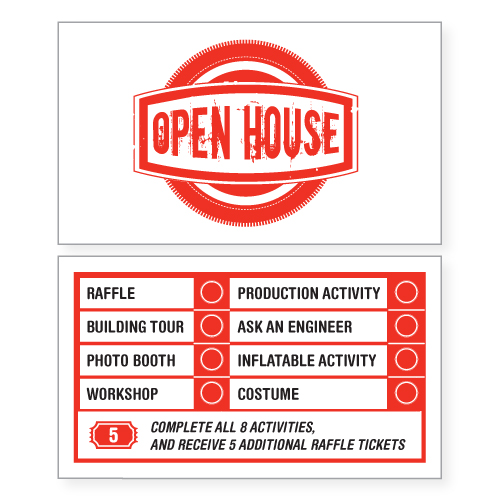New Product Friday: Steppin' on Up!
All you ever needed to know about servos and steppers is explained in this educational edition of the Friday New Product Post.
Today (October 22nd, 2011) is the SparkFun Open House! We are expecting a lot of people and it is sure to be a good time. We're going to have a whole gaggle of fun stuff - like bouncy castles, free food, tours, workshops, swag, and more - so swing by the SparkFun headquarters today from 11 am - 4 pm. We hope to see you here!
This week we have something special for you. Instead of the usual shenanigans in the product video, I decided to do some something a bit more educational. People are always asking for more tear-downs, more in-depth explanations of products, etc. So this week I decided to explain stepper motors and servos. Granted, it's general information and of course there are caveats and such, but it should serve as some good fundamental knowledge.
So there you have it, the longest video I've ever done here at SparkFun. I hope it helped out some of you. And if you like it, I hope to do more like it in the future. It's always fun taking things apart!
So, we have some new stepper motors this week. In addition to the small stepper motor we started carrying a few weeks back, and the other one we've been carrying for several years, we have this 58 oz.in stepper. It has a full 400 steps per revolution so you should be able to get some good accuracy for your next project.
Need a little bit more oomph? This 125 oz.in stepper motor is pretty hefty and should work when you need the extra torque. They're really well made and have a 0.25" output shaft for easy mounting.
If you are looking for a linear motor, why not check out this stepper motor. It's your standard 29 oz.in stepper but it has a threaded shaft running through it. When the motor spins, it pulls or pushes the threaded rod back and forth, creating linear motion. One end of the shaft is keyed (flat) so you can attach it easily. It even has a detachable wiring harness.
I really like this next kit. I've always wanted to include our 10-segment LED bar graphs into a project, but I'm too lazy to wire up each of the 10 LEDs. And you can't just use one, so then you're wiring up a LOT of LEDs. This kit makes life a lot easier. It combines 3 10-segment LEDs (green, yellow, and red), some shift registers, and a few other components so you can easily control all 30 LEDs with just a few pins on your microcontroller. We've even got an Arduino library and examples to get you started. You can easy daisy-chain multiple displays seamlessly together and make your own custom display.
And of course this is the UDB4 that we talked about yesterday. If you didn't get a chance to read the post yesterday, you should check it out. It's taken a lot of work to get to this revision, and the board has come a long way.
In addition to carrying the 4-digit 7-segment displays in yellow, blue, green and red, we now have them in white. These simple modules work well for timers, clocks, or basic numeric readouts.
Sometimes it's really hard to find the right part. We've been searching for a good surface-mount right-angle switch and we think we found one. The problem with most right-angle switches is that they tend to lift traces over time because the lateral force of using them weakens their connection. This one has 4 little feet that help to stabilize it. We will start incorporating this into our designs for better reliability.
We've added one more gas sensor to our lineup. In addition to our methane, LPG, carbon monoxide, and alcohol sensors, we now carry the hydrogen gas sensor. Use it for detecting hydrogen concentrations in the air. This sensor works with our gas sensor breakout as well.
We've added a new color to our StarBoard lineup. Now we have them in pink. These new versions also have a slick black flexible PCB.
We also have the LilyPad LEDs in pink! So now you have even more colors to light up your next e-textile project.
The Copernicus II is the latest iteration of the popular Copernicus GPS receiver from Trimble. It has a fast lock time and performs well in foliage canopy and urban canyon environments.
And finally, we have black 3/8" 4-40 nylon standoffs in packs of ten. Now you don't have to think 'should I get 4, or 5 in case I lose one?' Just get a pack of ten and you'll be set.
So there you have it, more products than usual and our longest ever New Product Post Video. Hopefully there's something in here you want/need for your next project. Thanks for reading and we'll see you again next week. Don't forget about Open House!




















